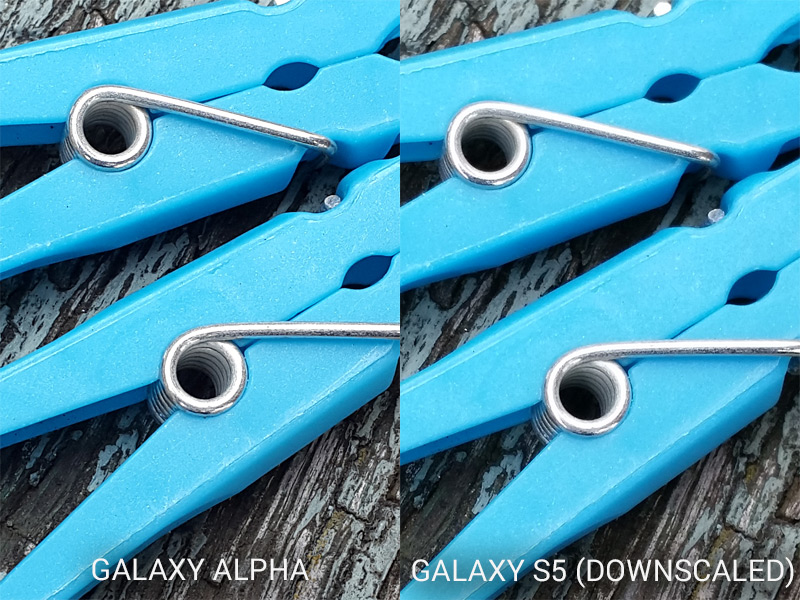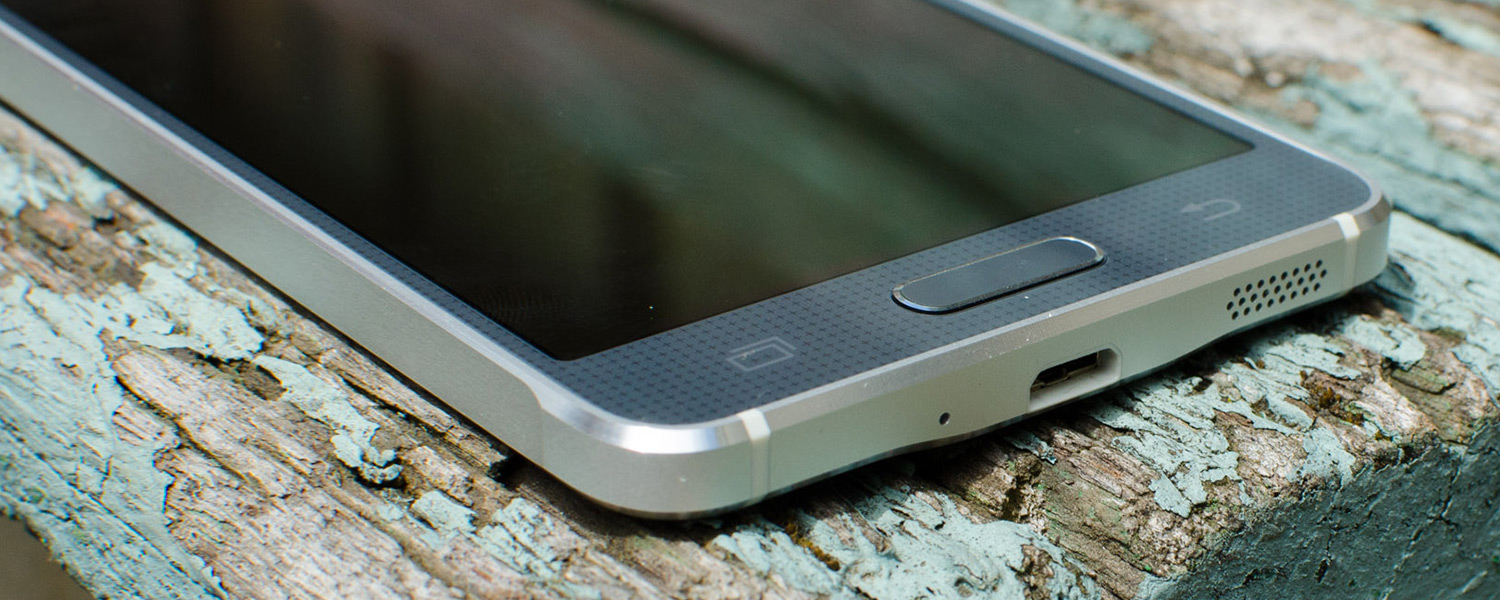Camera: 12-Megapixels... Downscaled?
The main camera found on the Samsung Galaxy Alpha is a 12-megapixel CMOS with ISOCELL technology, paired with an f/2.2 lens with a 35mm-equivalent focal length of around 31mm. Aside from the resolution, the camera is similar to the one found in the Galaxy Note 4 and Galaxy S5 (both 16-megapixel shooters) as it too features a native 16:9 aspect ratio.
Oddly, Samsung has gone to quite an effort to obscure the camera sensor model found in the Alpha, making it hard to discern any extra specifications. Both the S5 and Alpha have the same focal length (4.8mm) and same field of view, indicating both sensors are the same size. This means one of two things: either the pixel size has increased from 1.12µm to around 1.3µm; or the sensors are literally the same, with Samsung downscaling each 16-megapixel native capture to 12-megapixels in pre-processing.
While I'm not completely convinced, I believe the latter is more likely. The Alpha almost always uses the same ISO and shutter speed as the Galaxy S5 when capturing a particular scene, and as the photos from both phones look very similar, there is no indication of better low-light performance from the Alpha due to larger pixels. Furthermore, downscaling a photo taken with the Galaxy S5 to 12 megapixels looks strikingly similar to the same photo captured with an Alpha, as you can see below. Note that the Alpha also appears to apply an extra sharpening filter, producing tell-tale post processing artefacts.

This hypothesis is backed up by two other pieces of information. One is that neither Samsung nor Sony (the usual sources for flagship Galaxy cameras) produce 12-megapixel smartphone sensors as far as I can ascertain. The other is that when I was digging around in the Alpha's camera firmware diagnostic tool, it indicated the sensor was the same S5K2P2 model as found in the S5. The diagnostic tool isn't always the most reliable source, but it does give some insight to the camera hardware.
So at this stage I'm tentatively saying that the Galaxy Alpha packs a 16-megapixel 1/2.6" S5K2P2XX CMOS sensor with a pixel size of 1.12 µm, downscaled to 12-megapixels in the camera firmware. This 25% reduction in image size improves sharpness when looking at full-resolution crops, which could be Samsung's intention with the odd choice of downscaling (if I am correct).
As for image quality, the Galaxy Alpha produces images that are very similar to the Galaxy S5 (surprise, surprise). Metering isn't always identical, but you can usually rely on the Alpha to produce balanced images with good dynamic range and fantastic color accuracy, especially in strong sunlight. Even though photos are 12 MP rather than 16 MP, there's still room to manipulate them, and overall sharpness is marginally better compared to the S5.
The f/2.2 lens on the Alpha is optically quite decent, delivering acceptable bokeh for a smartphone. Like other high-end Galaxy devices, the Alpha comes with a selective focus mode that can introduce simulated background blur, though its implementation is still far from perfect.
While you'll typically get fantastic photos in good lighting, the lack of an OIS module means that in less than ideal conditions images won't be as amazing. Comparing images from the Alpha and the Note 4, the latter of which comes with OIS, shows that the Alpha's images aren't as bright or as crisp. Occasionally you'll get photos that are slightly blurry due to shaking hands, although color quality is still quite good.
Keeping the picture stabilization feature activated allows you to take some acceptable images in low light. The Alpha is certainly not as capable as a competing smartphone with OIS like the Note 4 or LG G3, but many photos taken at night can be usable. For times where it's simply too dark, the LED flash can help to illuminate the surrounds, although like most smartphone flashes it's limited in range and brightness.
As the Galaxy Alpha has largely the same software as the Galaxy S5, you also get all the same camera features. This includes a very good HDR mode, a handy amount of camera settings, several burst shot modes, and live effects. Combined with zero shutter lag and extremely fast autofocus, and the Galaxy Alpha comes with a very capable shooter.
The front camera, which is a 2.1-megapixel S5K8B1 1/7.3" CMOS sensor with 1.12µm pixels paired with an f/2.4 lens, is good enough for the occasional selfie and some 1080p video recording. It's certainly not the best selfie camera I've seen, lacking low-light friendly hardware and a wide-angle lens, but it gets the job done most of the time.
The Galaxy Alpha comes with all the same video recording features as the Galaxy S5. This means 4K Ultra HD video recording at 30 frames per second, smooth motion 1080p at 60 FPS, and even slow motion 720p at 120 FPS. Bitrates are identical, pushing up to 48 Mbps for 4K using high-profile H.264, a sample of which can be found below.
Quality when recording at 4K, especially when downscaled to fit a 1080p or 720p display, is excellent. Each frame looks similar to a still image, with great color quality and fast metering, while audio recording is also very good. The reduction to 12-megapixels for still images does not appear to have affected video recording in any significant way.














